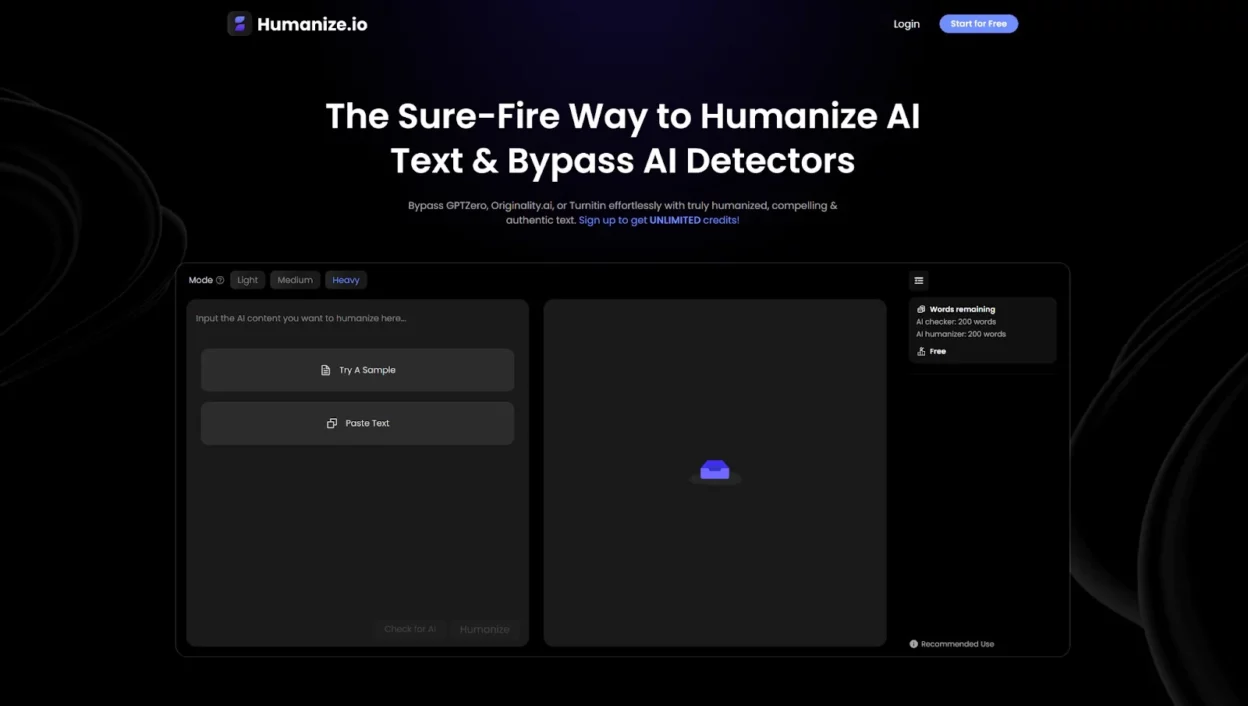When content gets flagged by Originality.ai, it’s not always because of plagiarism—it often stems from AI-style patterns. This guide shows how to use Humanize.io to make AI text more human and effectively bypass AI detectors like Originality.ai. It outlines a clear, step-by-step process while highlighting SEO and ethical considerations.
Originality.ai is engineered not just to catch copied phrases, but to detect writing patterns typical of AI—flat tone, repetitive sentence structures, predictable transitions. Many humanizers struggle: some may fool GPTZero but still score high on Originality.ai.
Humanize.io promises to tackle those issues head‑on, claiming a 99% success rate in bypassing top detectors. While independent tests show mixed results, most detector flags come from overly AI‑like phrasing. The goal is to rewrite in a way that feels human, not just “non‑AI.”
Before humanizing, prep your content:
- Clean grammar and punctuation.
- Clear, logical structure.
- Primary keywords naturally included.
Weak input limits output quality. High‑quality AI drafts let Humanize.io work effectively.
Step 2: Upload to Humanize.io & Choose Your Mode
- Visit Humanize.io.
- Paste your draft into the text window.
- Choose a humanization mode:
- Light: minor tweaks.
- Medium: balanced rewrite.
- Heavy: full restructuring.
- Light: minor tweaks.
For bypassing Originality.ai, Medium is the recommended starting point—it introduces variety without excessive rewriting. Choose Heavy for more complex or formulaic texts.
Step 3: Run Humanization
Hit “Humanize” and let the AI process your text. It will:
- Vary sentence length and syntax.
- Replace generic connectors.
- Inject subtle tone shifts and human-like flow.
These changes reduce detection triggers like uniform patterns—exactly what Originality.ai flags.
Step 4: Honor the Original Meaning
Once humanized:
- Check that key points, data, and SEO keywords remain intact.
- Adjust tone to match your brand or audience.
- Manually fine-tune any sections that feel unnatural or overly complex.
Humanize.io preserves content meaning, but you control quality.
Step 5: Test with the Built-In AI Checker
Humanize.io supports integrated checks (including Originality.ai, GPTZero, Copyleaks). Run your revised text through the checker to:
- See if it still triggers AI-style flags.
- Compare scores between original and humanized versions.
This real-time feedback allows iterative refinement.
Step 6: Rerun or Refine as Needed
If the text still scores high with Originality.ai:
- Try another pass using Medium or Heavy mode.
- Break content into smaller chunks—humanizing one section at a time can yield better results.
- Introduce human touches: rhetorical questions, slight colloquialisms, or controlled inconsistencies.
Detector-bypass studies show that weaving in these patterns lowers AI-detection probability.
Step 7: Final Review & Export
Before publishing:
- Read the final version aloud. Does it sound like a human wrote it?
- Ensure SEO keywords appear naturally.
- Export the text for use in your CMS, email campaign, academic submission, or client draft.
Why This Strategy Works
Originality.ai flags content based on stylometric markers—repetition, uniformity, and robotic phrasing. Studies suggest even minor variations—rewriting, tone shifts, connectors—can lower detectability from ~90% to ~30%. That’s the objective of Humanize.io.
By selecting the right mode, reviewing the output, and iterating, you effectively break the patterns that Originality.ai hunts for—without losing meaning, clarity, or SEO effectiveness.
Pro Tips
- Use multiple passes: A second round in Medium or Heavy mode helps break stubborn patterns.
- Chunk it manually: Section-by-section humanization gives you more control over tone and flow.
- Inject human quirks: Small stylistic tics or colloquial hinges can shift detector scores significantly.
- Check SEO: Ensure keywords are still present naturally—no stuffing.
- Test multiple detectors: Passing Originality.ai doesn’t guarantee success on GPTZero or Turnitin—test across platforms.
Limitations to Be Aware Of
- Not foolproof: Even well-humanized text may still be flagged—especially on heavily formulaic or technical content.
- No ideation: Humanize.io rewrites—if your draft is boilerplate or hollow, the end result will be too.
- Manual oversight required: Blindly trusting AI to humanize can introduce small errors or tone mismatches.
Ethical & Strategic Notes
- Always check if AI tools are permitted (e.g., in academic contexts).
- Use this tool responsibly—represent content honestly, especially in academic or regulated settings.
- When used correctly, this is not cheating—it’s optimizing for human clarity and SEO performance.
Conclusion
By combining Humanize.io with iterative refinement, integrated checking, and intentional human touches, you can substantially lower your chances of being flagged by Originality.ai—often from “likely AI” down to human-level. It’s not about tricking the system—it’s about creating content that genuinely reads like a human wrote it, currently passing up to 99% of AI detectors.
Used wisely and ethically, this guide helps you turn AI drafts into authentic, foolproof content ready for publishing—while still preserving SEO and clarity.

Lexy Summer is a talented writer with a deep passion for the art of language and storytelling. With a background in editing and content creation, Lexy has honed her skills in crafting clear, engaging, and grammatically flawless writing.



